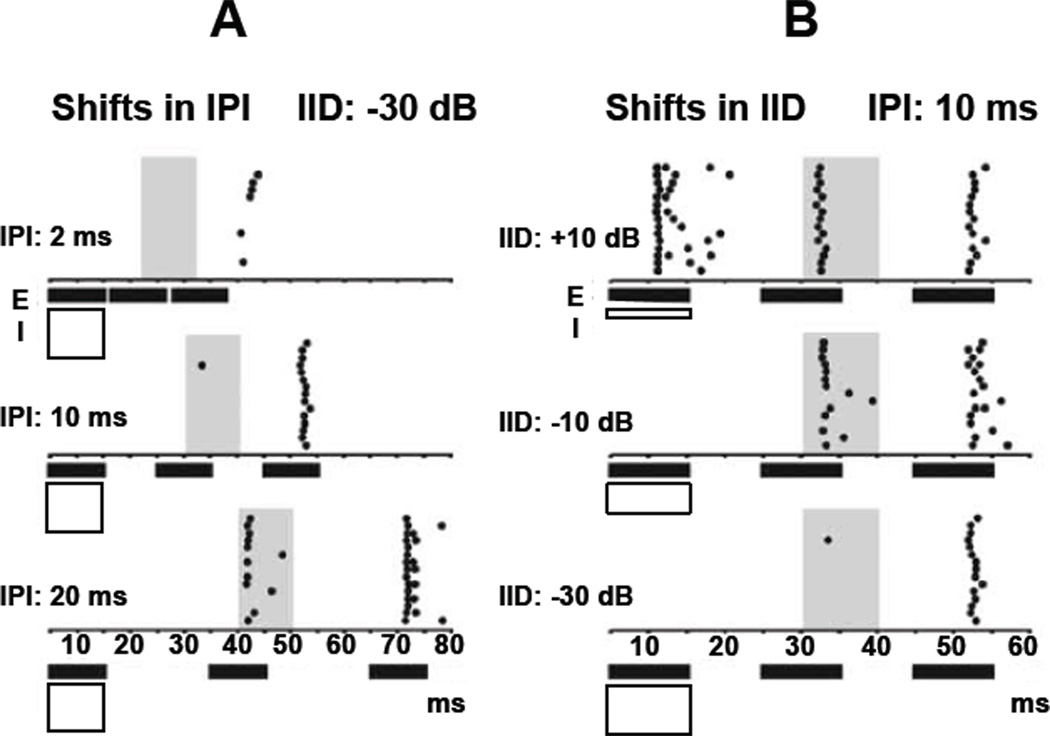Fig. 3.
Suppression of responses to trailing sounds in a DNLL neuron. Three tones were presented in succession. The first tone was always binaural while the trailing tones were monaural and were presented only to the contralateral (excitatory) ear. A: The IID of the first binaural sound was held constant at −30 dB (inhibitory ear more intense) while the second and third sounds were monaural and suprathreshold. In the top panel the inter-pulse interval (IPI) was only 2 ms. The persistent inhibition generated by the first binaural tone completely inhibited the responses to the second, trailing sound and partially suppressed responses to the third, trailing sound. As the IPI was lengthened to 10 ms, the second, trailing sound was still very strongly suppressed but the persistent inhibition was largely over when the third sound was presented, allowing the neuron to respond to every presentation of the third sound. The responses to the second sounds were still slightly suppressed even when the IPI was lengthened to 20 ms, although the responses to the third sounds were unaffected. B: Increasing the intensity at the inhibitory ear caused a progressive inhibition of responses to the second trailing sound when the IPI was held constant at 10 ms. Adapted from Pecka et al., 2009.

